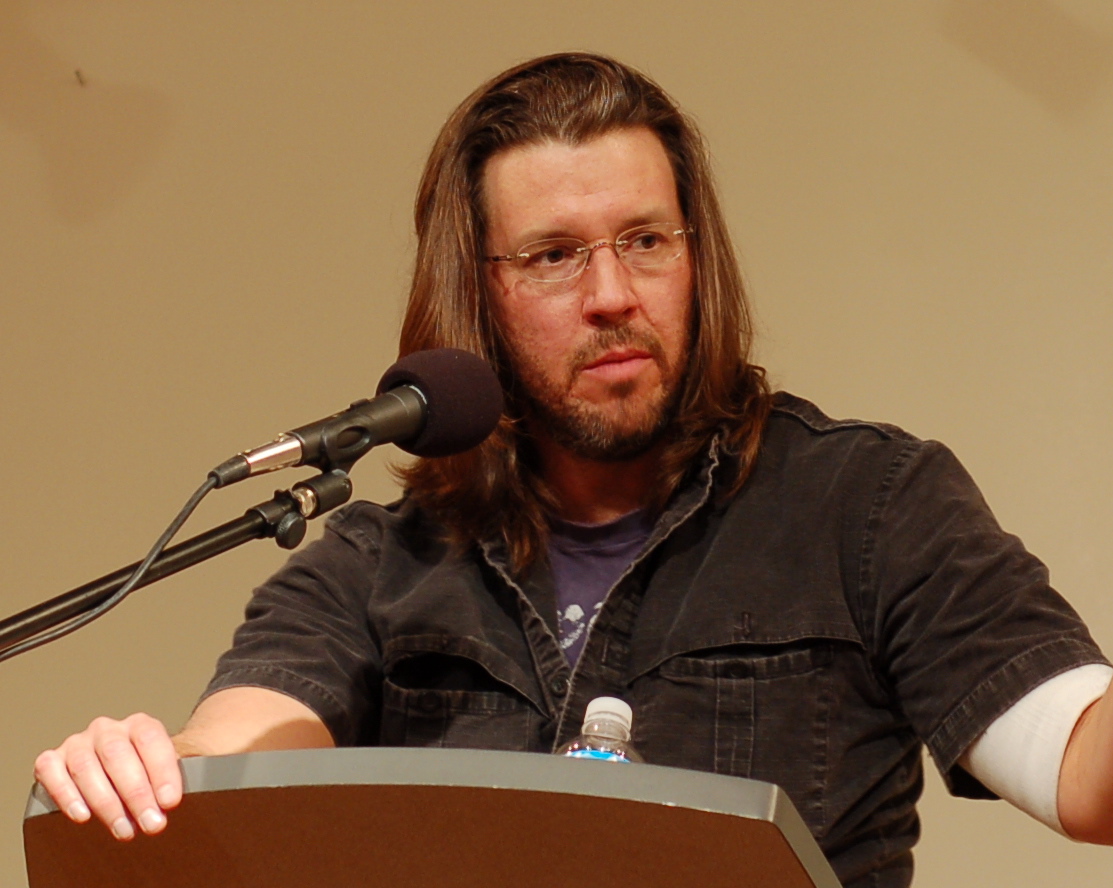Towards the end of “E Unibus Pluram” David Foster Wallace
writes, “The next real literary “rebels” in this country might well emerge as
some weird bunch of anti-rebels, born
oglers who dare somehow to back away from ironic watching, who have the
childish gall actually to endorse and instantiate single-entendre principles”
(81). He is making a case for
people who actually and literally mean what they say; he wants artists and
creators who, “treat of plain old untrendy human troubles and emotions in U.S.
life with reverence and conviction” (81).
There is some difficulty in this in that it will be tough for those who
have been inculcated, indoctrinated, and inundated with postmodern irony. How will we know sincerity when we see
it?
As I have said before, I think that the term ‘radical
literalism’ describes Wallace’s project nicely, but I haven’t really gotten
into what a radical literalist reading of a piece of work might look like. So, with that, let’s start with D.F.W.
himself:
Wallace wrote a story entitled “Good Ol’ Neon” that might
shed some light on what single-entendre literature (or radical literalist
literature) might look like, or at least one version of it. This is a story of a man who is going
to commit suicide, but, more than that, it is about the thoughts that might
flow through one’s head in the moments just before death. It takes Wallace about forty dense
pages to flesh these last moments out, which suggests that in order to truly
understand just a few seconds in a person’s head, it might take forty pages of
dense writing or more. Writing for
the single entendre is tough work.
“Good Ol’ Neon” is also a narrative that takes place in the first
person. This first person
narrative is highly self-conscious, not in the meta-narrative fashion of the
postmodern, but in a way that expresses concern for transparency. We can see this in a passage where the
narrator is discussing the act of constructing his suicide note for his sister,
Even as I wrote the note to Fern,
for instance, expressing sentiments and regrets that were real, a part of me
was noticing what a fine and sincere note it was, and anticipated the effect on
Fern of this or that heartfelt phrase, while yet another part was observing the
whole scene of a man in a dress shirt and no tie sitting at his breakfast nook
writing a heartfelt note on his last afternoon alive, the blondwood table’s
surface trembling with sunlight and the man’s hand steady and face both haunted
by regret and ennobled by resolve, this part of me sort of hovering above and
just to the left of myself, evaluating the scene, and thinking what a fine and
genuine-seeming performance in a drama it would make if only we all had not
already been subject to countless scenes just like it in dramas ever since we
first saw a movie or read a book, which somehow entailed that real scenes like
the one of my suicide note were now compelling and genuine only to their
participants…(175-6)
This excerpt represents only about half of the
sentence. The narrator is in a
spiral of sincerity, of trying to represent something honestly and without
irony or double meanings. He wants
to express his pain in a way that doesn’t pander to sentimentality, while at
the same time acknowledging his awareness of how insincere honest sincerity
might come across.
This narrative is complicated even more when the narrator
steps outside of it in the form of a footnote. The footnote is a bit discursive and at the end of it is
written the words “The End”. But
the story continues, or at least the words continue. Here Wallace is exposing the falsity of endings, or at least
the contrived nature of them. The
story continues (or if not the story, then the writing) to introduce a new
character, that of David Foster Wallace, who “blinks in the midst of idly
scanning class photos from his 1980 Aurora West J.S. yearbook” (180). But the
original narrator remains in control of the narrative. The narrator lets the readers in on the
fact that Wallace is staring at a photo of a classmate who was killed in a car
crash, which is how the narrator commits suicide, and is trying to imagine what
must have been going through his mind.
Again we can see the story working hard to operate emotionally honest. Wallace goes through pains, twists
himself in pretzels, to work in a way that exists outside of irony. The story is honestly concerned with
empathy, with trying to feel something in a real way.

